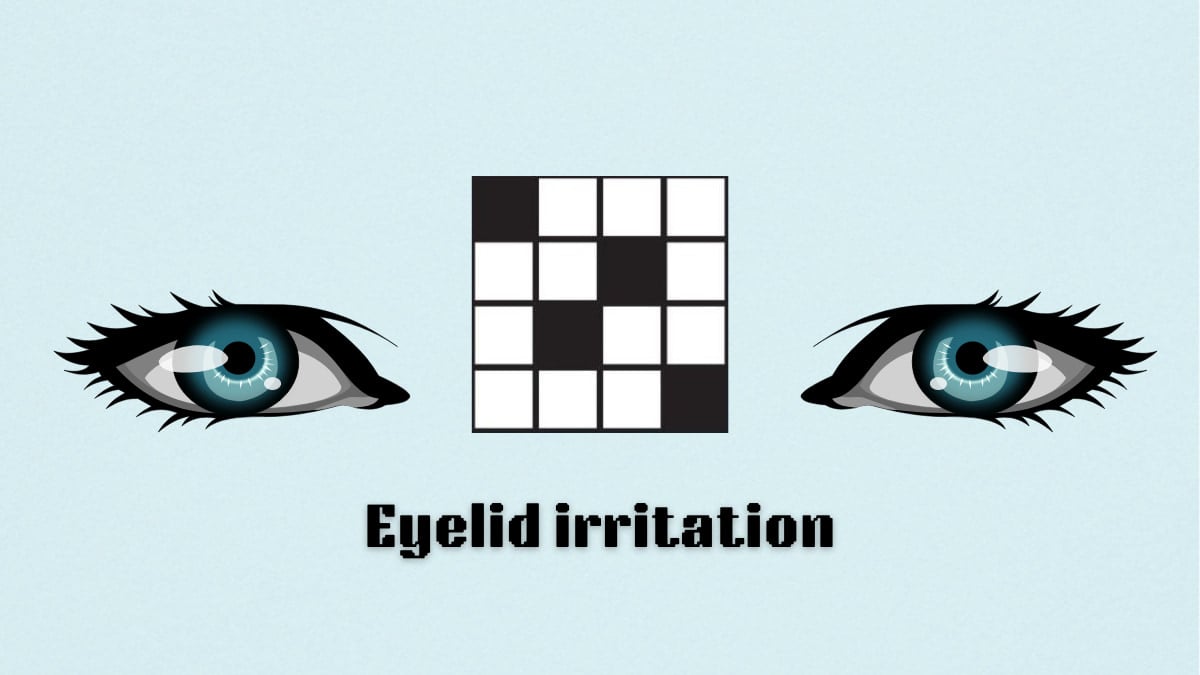Eyelid Irritation NYT: Understanding Causes, Symptoms, And Remedies
Eyelid irritation is a common issue that can significantly affect your daily life and comfort. Whether you're reading about it in The New York Times or experiencing it firsthand, understanding its causes and treatments is crucial. Many people suffer from eyelid irritation but often overlook its underlying causes, leading to prolonged discomfort. This article dives deep into the topic, offering comprehensive insights into eyelid irritation, its symptoms, causes, and effective remedies.
Eyelid irritation, as discussed in articles like those featured in The New York Times, is more than just a minor inconvenience. It can be a sign of underlying health issues, environmental factors, or even lifestyle choices. Recognizing the signs early and seeking appropriate treatment can prevent complications and improve your quality of life.
In this article, we will explore everything you need to know about eyelid irritation, from its most common causes to the best ways to treat it. Whether you're dealing with mild discomfort or chronic irritation, this guide will provide you with the knowledge and tools to manage and alleviate your symptoms effectively.
Read also:Chris Noth Age A Comprehensive Look At The Iconic Actors Life And Career
Table of Contents
- Introduction to Eyelid Irritation
- Causes of Eyelid Irritation
- Symptoms of Eyelid Irritation
- Diagnosing Eyelid Irritation
- Treatments for Eyelid Irritation
- Preventing Eyelid Irritation
- Lifestyle Changes for Better Eye Health
- Natural Remedies for Eyelid Irritation
- When to Seek Professional Help
- Conclusion
Introduction to Eyelid Irritation
What is Eyelid Irritation?
Eyelid irritation refers to the inflammation or discomfort experienced on the eyelids. It can manifest as redness, swelling, itching, or a burning sensation. While it is often temporary and mild, persistent irritation can indicate a more serious condition that requires medical attention.
Why is Eyelid Irritation Important?
The eyelids play a vital role in protecting the eyes from dust, debris, and other harmful elements. When irritated, their ability to perform this function is compromised, potentially leading to further eye issues. Understanding eyelid irritation is essential for maintaining overall eye health.
Common Triggers of Eyelid Irritation
Several factors can trigger eyelid irritation, including:
- Environmental allergens
- Makeup and skincare products
- Contact lens use
- Underlying medical conditions
Causes of Eyelid Irritation
Eyelid irritation can stem from various causes, ranging from external factors to internal health conditions. Identifying the root cause is essential for effective treatment.
Environmental Factors
Pollution, dust, smoke, and pollen can irritate the delicate skin of the eyelids. Exposure to these elements, especially in urban areas, can exacerbate symptoms.
Product Use
Many people experience eyelid irritation due to makeup, skincare products, or even shampoos. Ingredients like fragrances, preservatives, and dyes can cause allergic reactions or irritation.
Read also:March 27 Birthdays Celebrating The Lives And Achievements Of Iconic People
Medical Conditions
Conditions such as blepharitis, dermatitis, and rosacea are common culprits of eyelid irritation. These conditions often require specific treatments to alleviate symptoms effectively.
Symptoms of Eyelid Irritation
Recognizing the symptoms of eyelid irritation is the first step toward addressing the issue. Common symptoms include:
- Redness
- Swelling
- Itching
- Burning sensation
- Crusting or flaking
If you experience any of these symptoms persistently, it's important to consult a healthcare professional.
Diagnosing Eyelid Irritation
Medical Evaluation
A thorough evaluation by an eye care professional is necessary to determine the cause of eyelid irritation. This may involve a physical examination, review of medical history, and, in some cases, laboratory tests.
Self-Assessment
While professional diagnosis is ideal, self-assessment can help identify potential triggers. Keeping a journal of symptoms and potential irritants can provide valuable insights.
Treatments for Eyelid Irritation
Treatment options for eyelid irritation vary depending on the underlying cause. Here are some effective approaches:
Over-the-Counter Remedies
Products like artificial tears, antihistamines, and mild corticosteroids can provide relief for mild cases of eyelid irritation.
Prescription Medications
In more severe cases, a doctor may prescribe antibiotics, anti-inflammatory medications, or specialized ointments to treat the condition.
Preventing Eyelid Irritation
Prevention is key to managing eyelid irritation. Here are some tips to reduce the risk:
- Avoid known allergens and irritants
- Use hypoallergenic products
- Practice good hygiene, especially around the eyes
- Protect your eyes from environmental factors
Lifestyle Changes for Better Eye Health
Diet and Nutrition
A balanced diet rich in vitamins and minerals can support eye health and reduce the risk of irritation. Foods high in omega-3 fatty acids, such as fish and nuts, are particularly beneficial.
Hydration
Staying hydrated is crucial for maintaining healthy skin, including the delicate skin of the eyelids. Drink plenty of water throughout the day to keep your body and eyes hydrated.
Natural Remedies for Eyelid Irritation
For those who prefer natural solutions, several remedies can provide relief:
- Warm compresses to soothe inflammation
- Chamomile tea bags to reduce swelling
- Aloe vera gel for its soothing properties
These remedies are gentle and effective for mild cases of eyelid irritation.
When to Seek Professional Help
While many cases of eyelid irritation can be managed at home, some situations require professional intervention. Seek medical attention if:
- Symptoms persist for more than a week
- There is significant swelling or pain
- Blurred vision or other vision problems occur
Early intervention can prevent complications and ensure proper treatment.
Conclusion
Eyelid irritation, as discussed in publications like The New York Times, is a common yet manageable condition. By understanding its causes, recognizing its symptoms, and implementing effective treatments, you can alleviate discomfort and maintain optimal eye health.
We encourage readers to share their experiences or ask questions in the comments section below. Additionally, explore other articles on our site for more insights into eye care and overall wellness. Remember, prioritizing your eye health is an investment in your quality of life.
For further reading and reliable information, consider consulting sources such as:
Stay informed, stay healthy!


